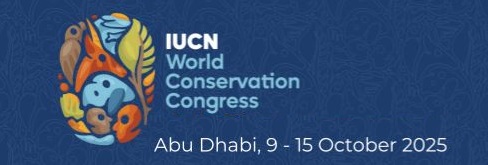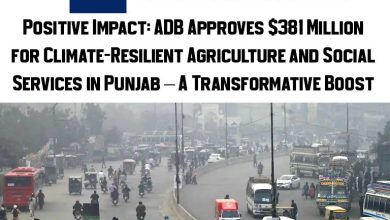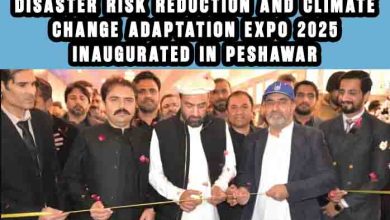Inspiring Revival: How Artificial Glaciers in Gilgit-Baltistan Are Combating Climate Despair
Discover how youth-led initiatives are reviving artificial glaciers in Gilgit-Baltistan to tackle water scarcity and climate change through innovation and community power.
Artificial glaciers in Gilgit-Baltistan are not a new concept—but they are a fading tradition that once empowered mountain communities to survive the region’s seasonal water shortages. With climate change accelerating glacier melt and increasing the frequency of glacial lake outburst floods (GLOFs), water has become both scarcer and more destructive.
In the town of Khaplu, three young boys—Ghayur, Mairaj, and their cousin—watched their childhood dreams of snowy adventure turn into climate nightmares. Villages went dry. Conflicts over water erupted. Families abandoned their homes. But instead of despairing, they asked a radical question: “Could we build our own glacier?”
The Spark: Youth Power and the Generation Unlimited Challenge
With no internet, no laptops, and no engineering experience, the three teens built a prototype using scraps. It was rudimentary, but it worked. Hope sparked action.
A chance meeting with a visiting facilitator introduced them to the Generation Unlimited Youth Challenge, an initiative supported by UNICEF. Their handwritten application, submitted by mentor Nasim Rashpori, won them national recognition—and their first funding: PKR 175,000.
For the first time, they left Khaplu for Islamabad. They learned how to use a laptop, how to pitch their idea, and how to lead.
“Our English wasn’t perfect, but our ideas mattered,” they recalled. That belief changed everything.
Building the First Glacier: One Step at a Time
Armed with funding and fresh knowledge, the team selected a glacier site 4,800 meters above sea level. The trek was perilous—marked by sub-zero temperatures, slippery ice paths, and high-altitude exhaustion. Yet, the community rallied. Local volunteers joined hands. Their mother’s encouragement became their lifeline.
Every pipe installed and every snow catchment aligned was a lesson in design, durability, and direction. Their first artificial glacier worked, but more importantly, it proved that artificial glaciers in Gilgit-Baltistan could be youth-led and community-powered.
Scaling Up: Community, Mentorship, and New Horizons
With proof of concept in hand, the team sought to expand. While Ghayur pursued studies in Islamabad, he simultaneously led proposal writing efforts. The response from UNICEF and the School of Leadership Foundation was overwhelmingly positive—they received a second grant, this time accompanied by year-long mentorship.
From August 2024 to June 2025, their team worked to build improved, more sustainable glacier structures in Machulo village. The stakes were higher. Temperatures plunged below -20°C. Logistics became tougher. But they now had skills, data, and support.
By October 2025, two fully functional artificial glaciers had been installed—ready to serve entire communities during the dry season.
From Ice to Impact: A Model for Climate Resilience
The artificial glaciers aren’t just freezing water—they’re creating stability. By slowly releasing water during the spring, they ease pressure on dwindling natural resources, protect crops, and prevent mass migrations.
What’s more, these projects revive indigenous knowledge using modern techniques—a fusion that strengthens cultural identity while addressing climate adaptation. The artificial glaciers in Gilgit-Baltistan have now become a model for other vulnerable regions across the Hindu Kush Himalayas.
💡 Explore more on how artificial glaciers are being used globally: The Third Pole
Empowering Change: Leadership, Learning, and Advocacy
The journey didn’t stop at engineering. These young leaders joined the Young Leaders Conference, refining their public speaking and advocacy skills. They also took part in UNICEF’s Social and Behaviour Change (SBC) training, learning how to mobilize community action.
With these tools, they began hosting climate awareness sessions across neighboring villages. Their message was clear: Climate change is real. But we can fight back—together.
They taught others how to maintain artificial glaciers, encouraged climate-smart water practices, and reignited a culture of community ownership. This wasn’t just a climate initiative—it had become a movement.
Conclusion: A Future Shaped by Ice and Ideas
From the icy ridges of Khaplu to the podiums of national conferences, these youth have done more than build glaciers. They’ve shifted mindsets, moved mountains—literally and metaphorically—and ignited a powerful call to action rooted in both tradition and innovation.
The artificial glaciers in Gilgit-Baltistan stand today not only as symbols of survival but also as blueprints for global climate resilience. With continued support from UNICEF and partnerships that empower local leadership, these frozen monuments of hope might just change the world—one drop at a time.
Internal and External Resources
- 🔗 UNICEF Pakistan’s Climate Action Page
- 🔗 School of Leadership Foundation
- 🔗 Related: Pakistan’s Youth Lead Climate Resilience in Mountain Regions
- 🔗 Learn About GLOF and Artificial Glaciers
- 🔗 Internal Link: Read about Climate Change in Pakistan’s Northern Regions
- 🔗 Internal Link: Youth-Led Environmental Solutions in Pakistan







